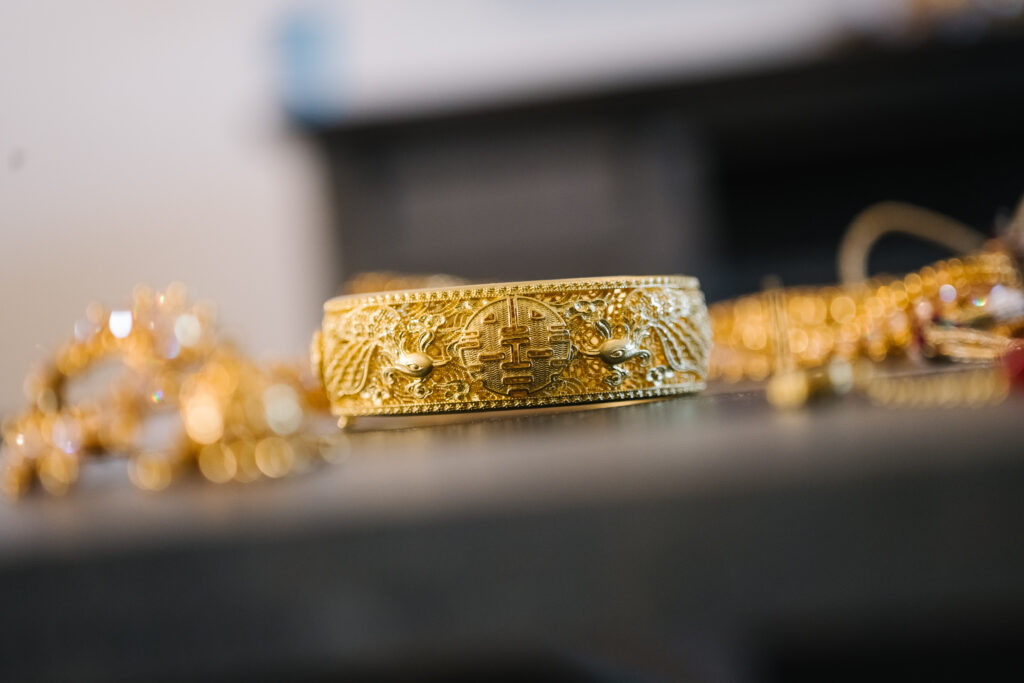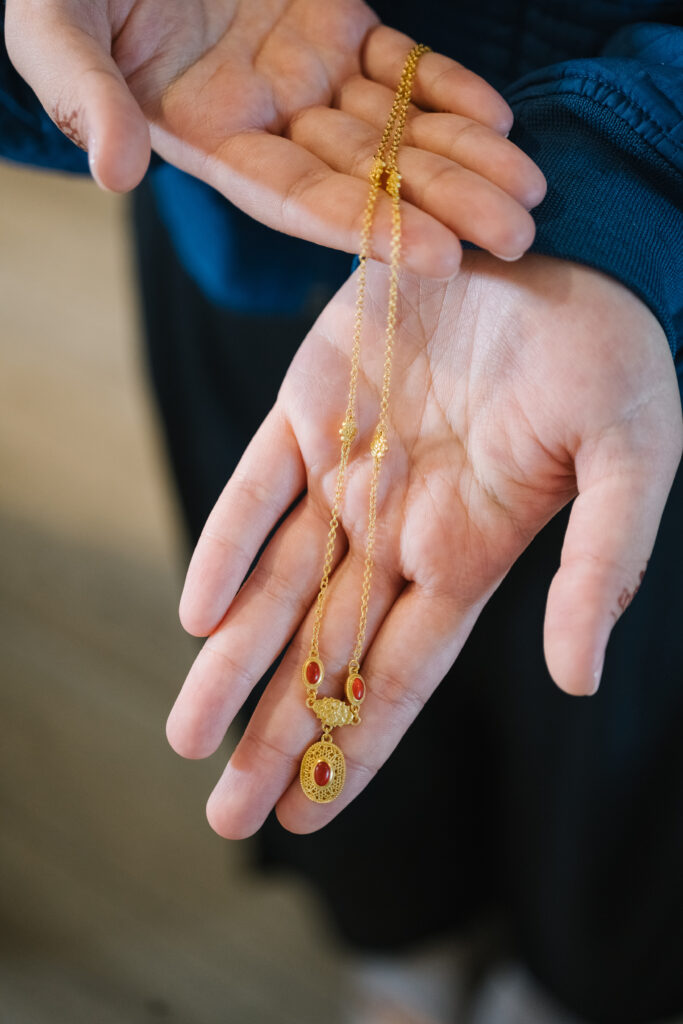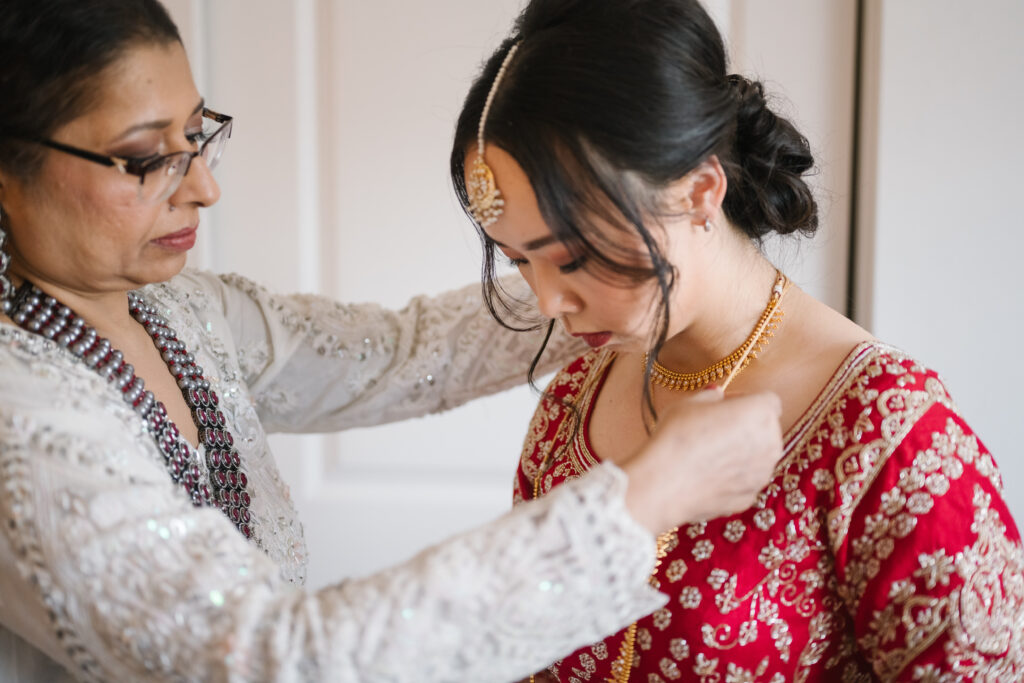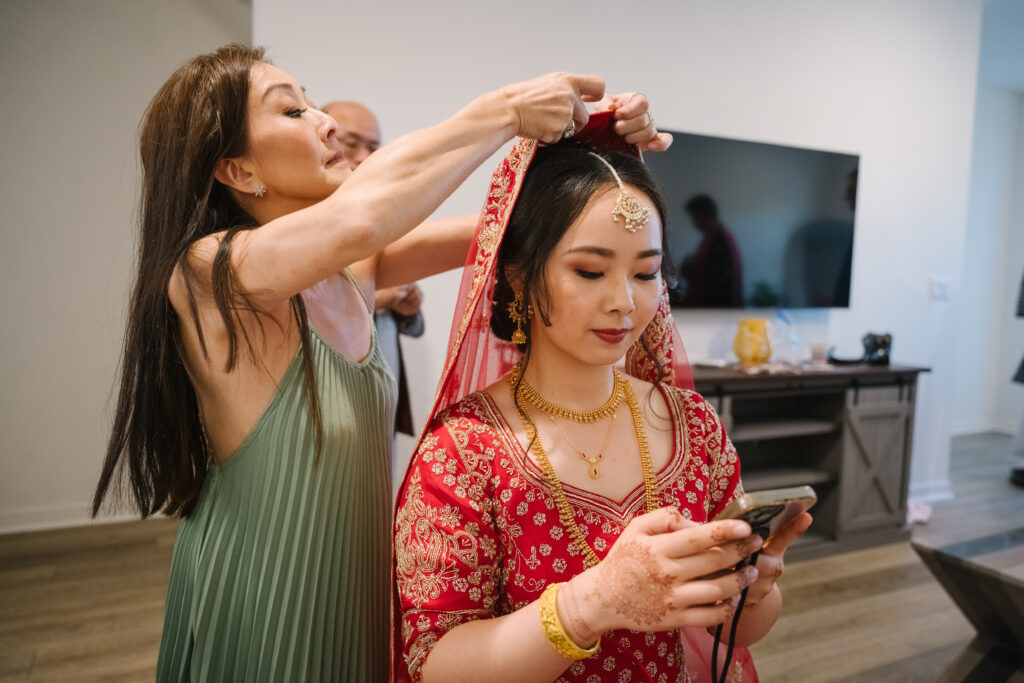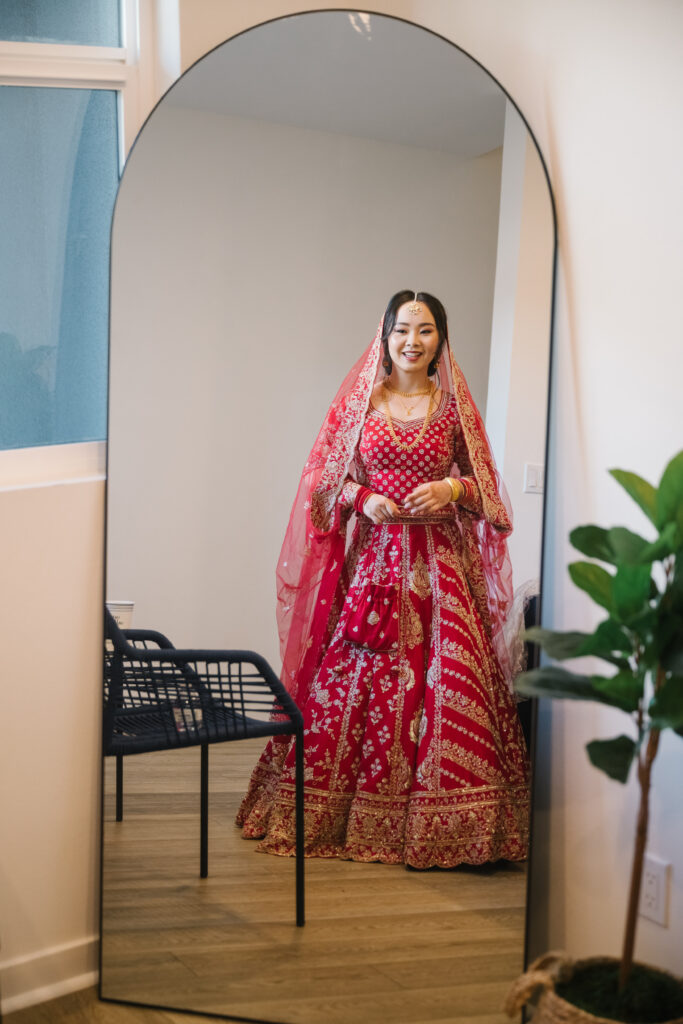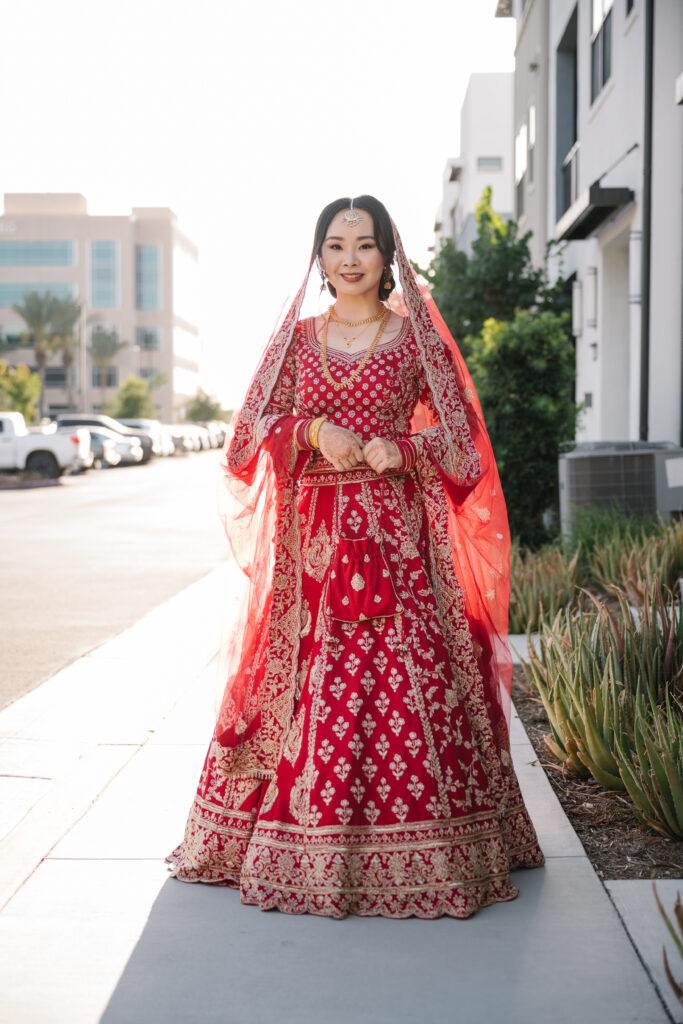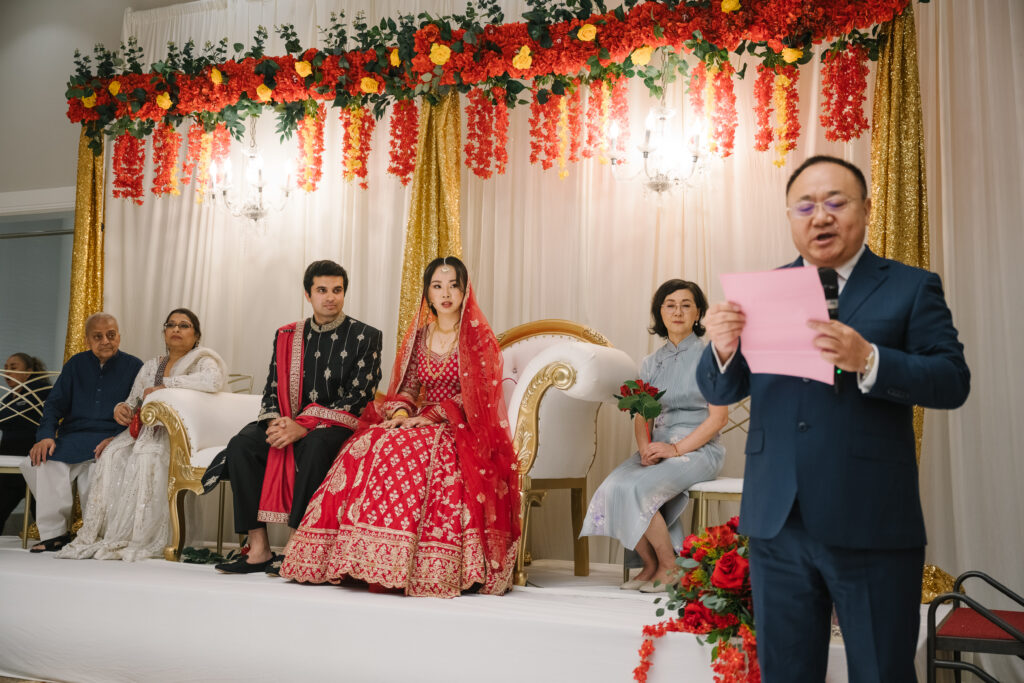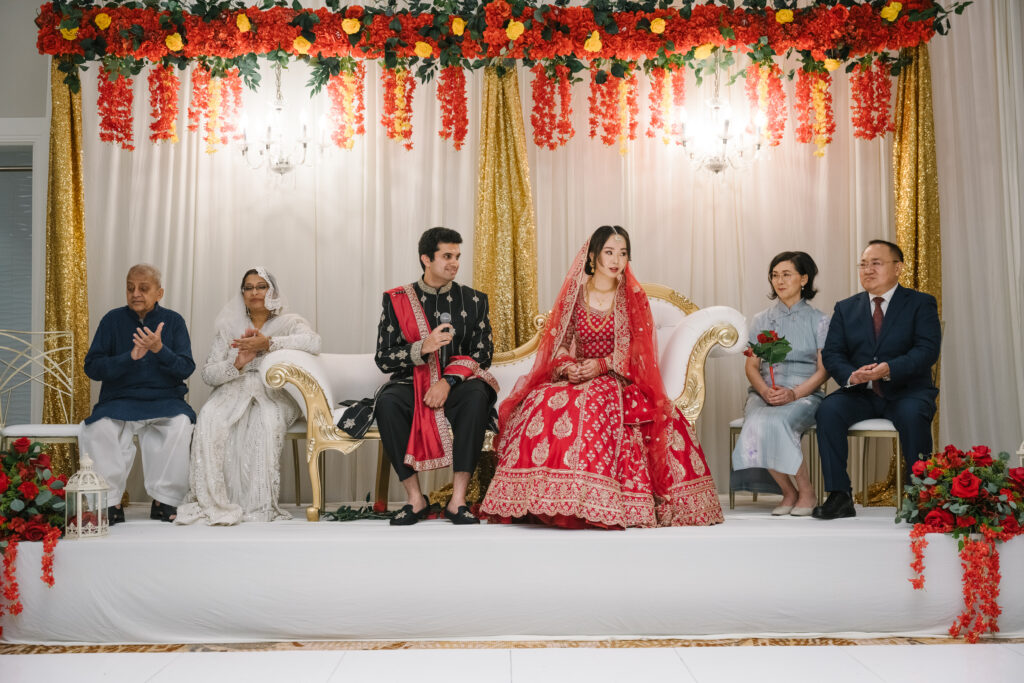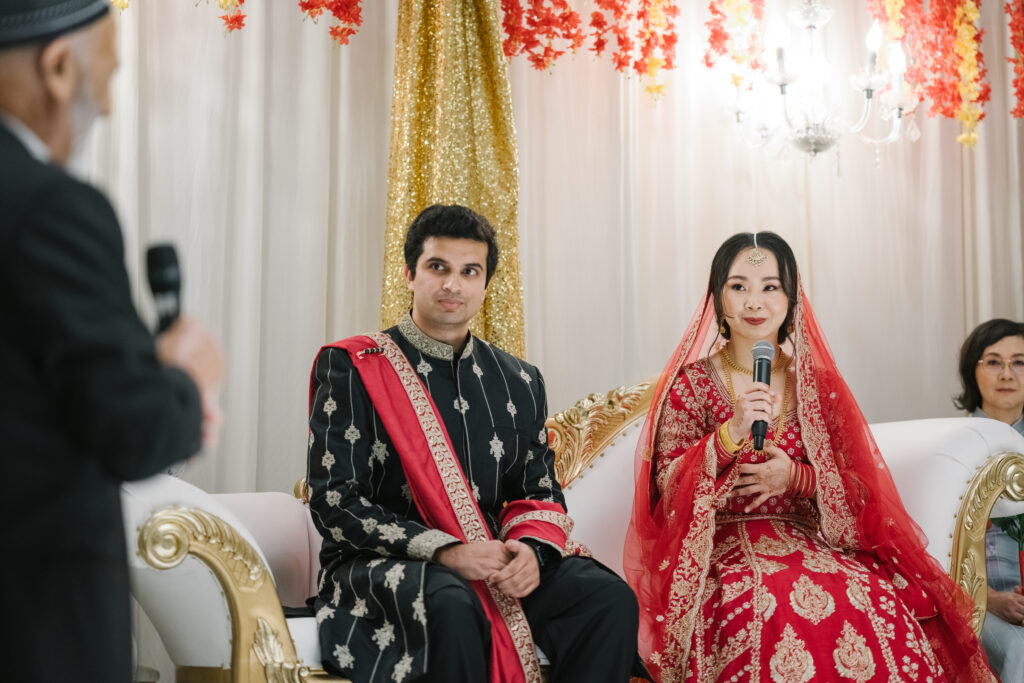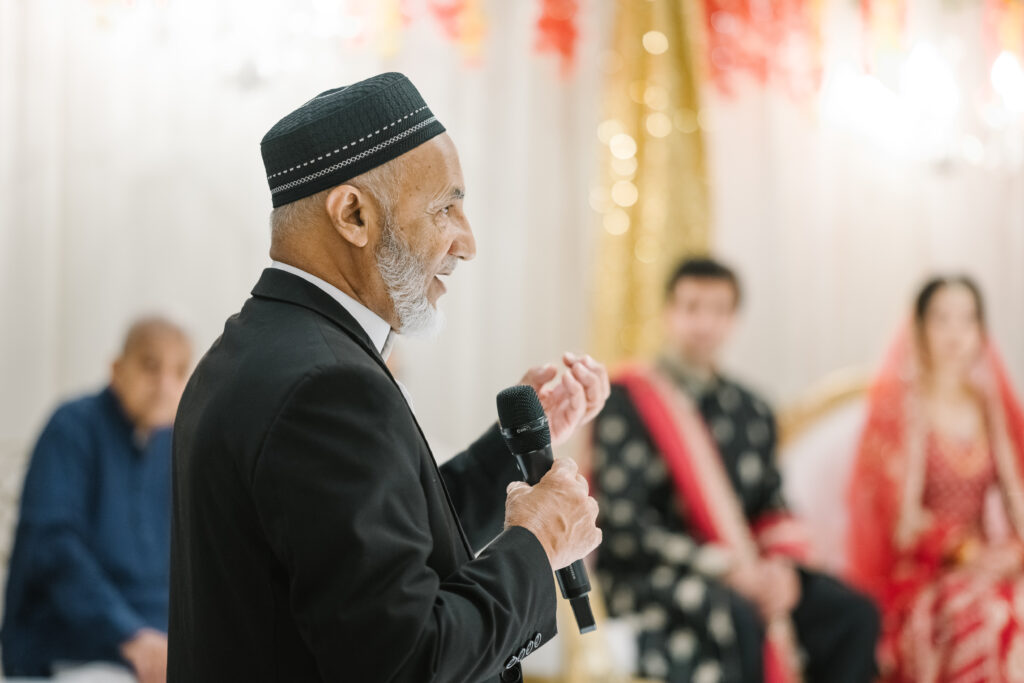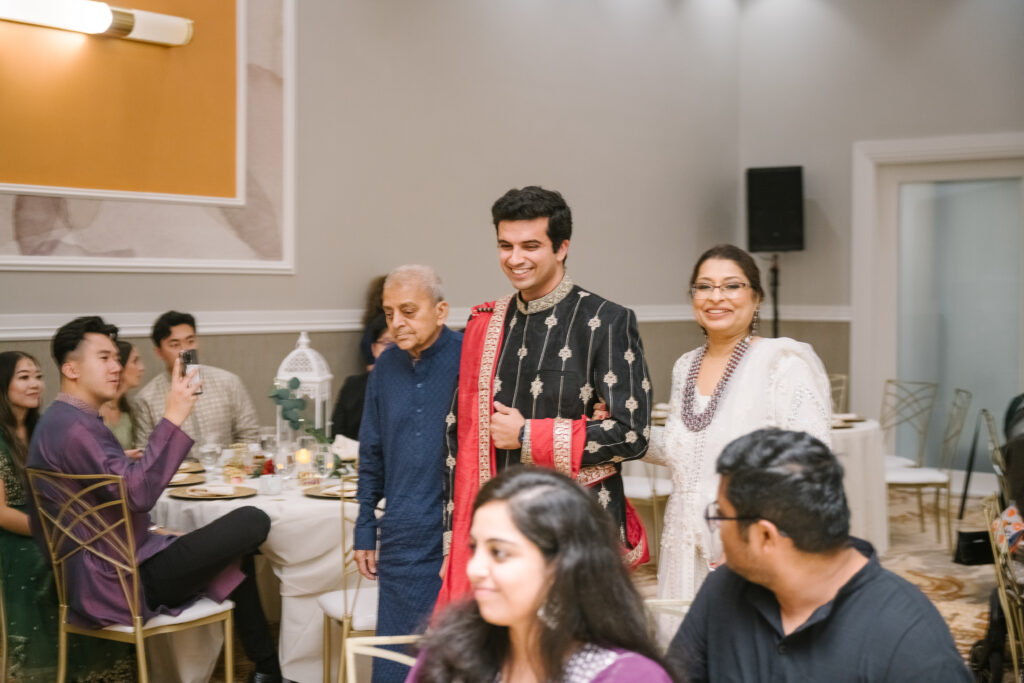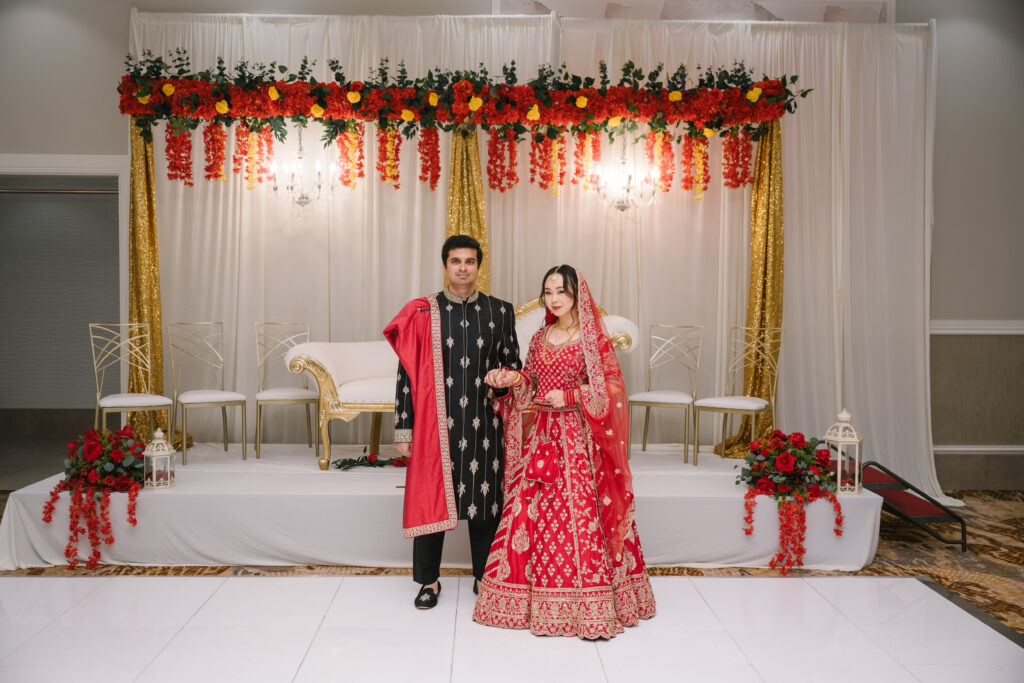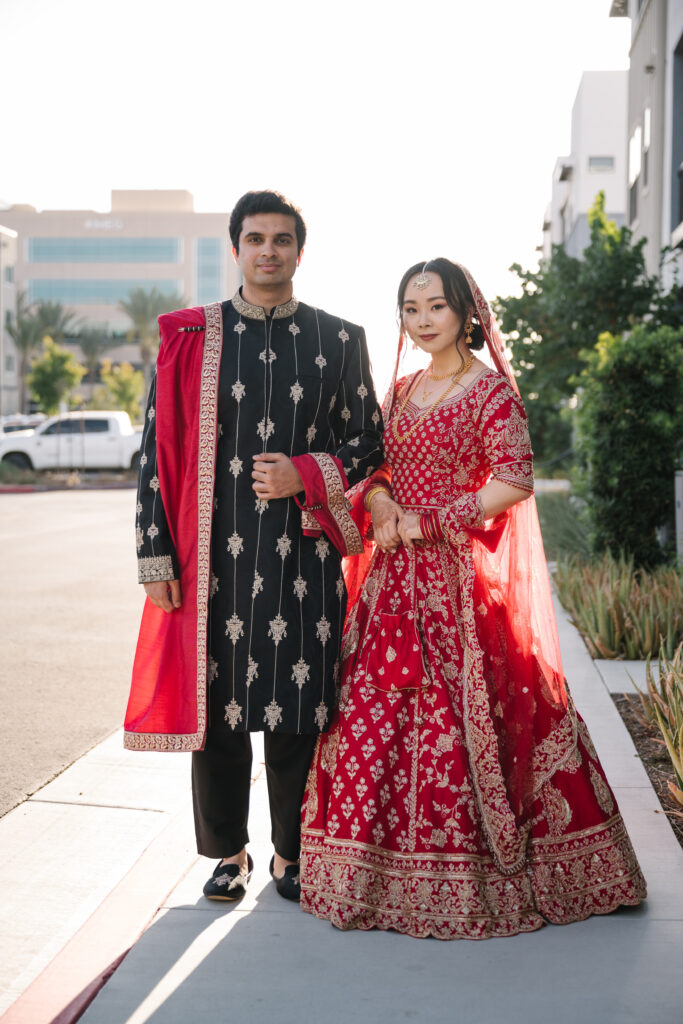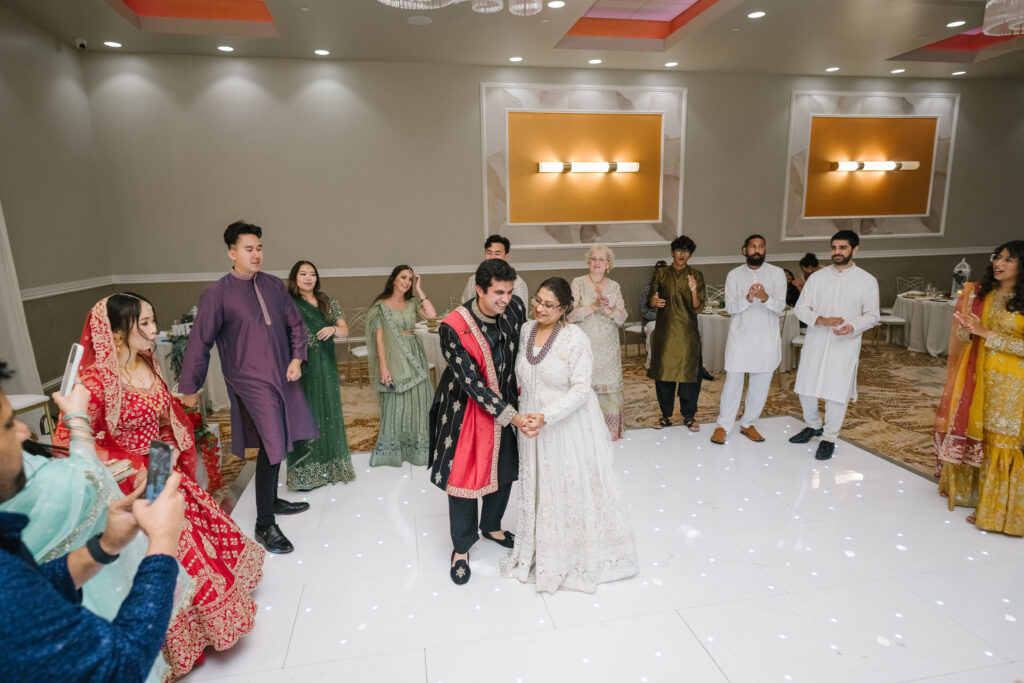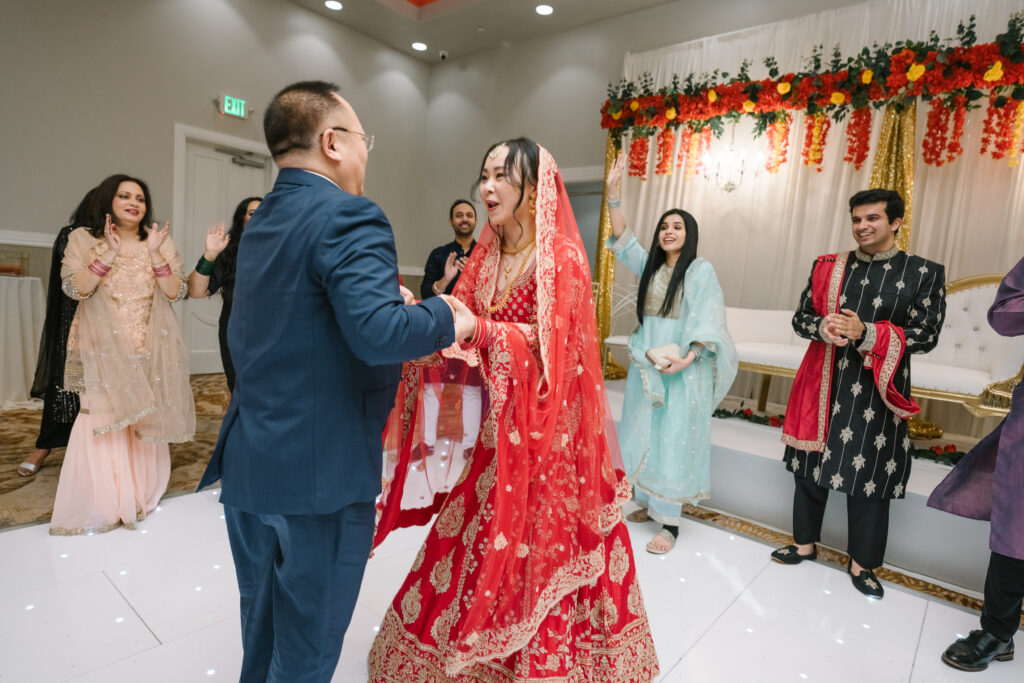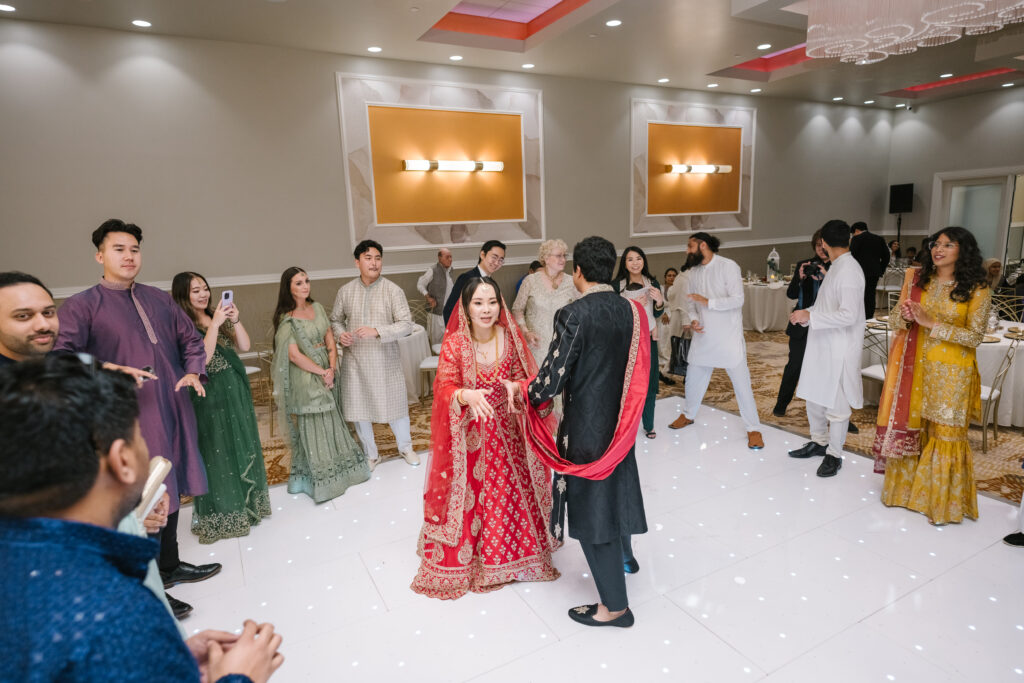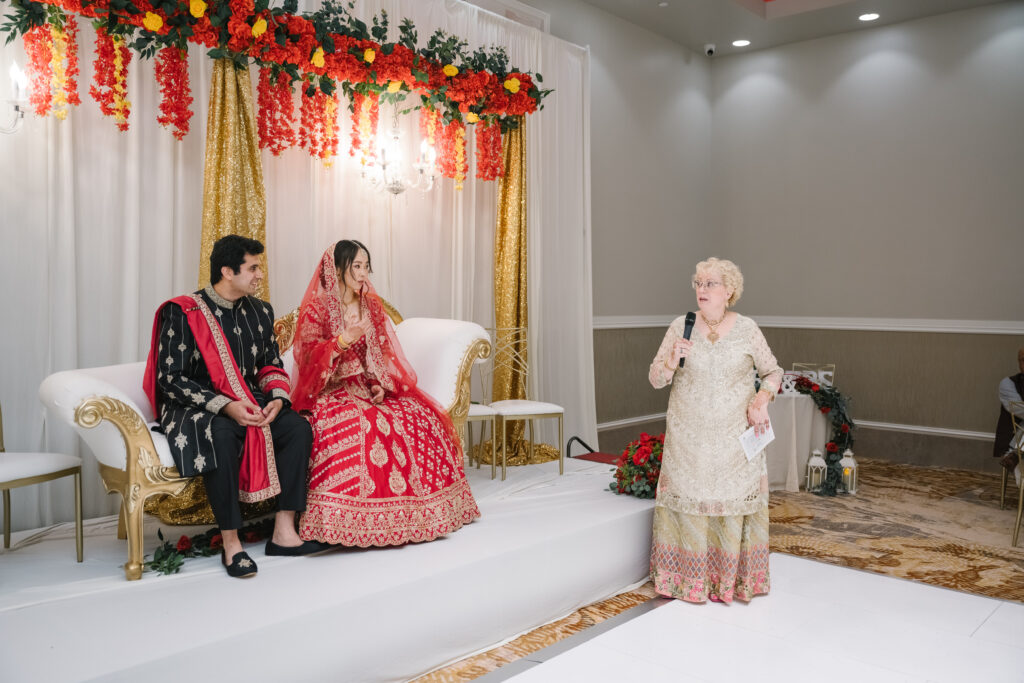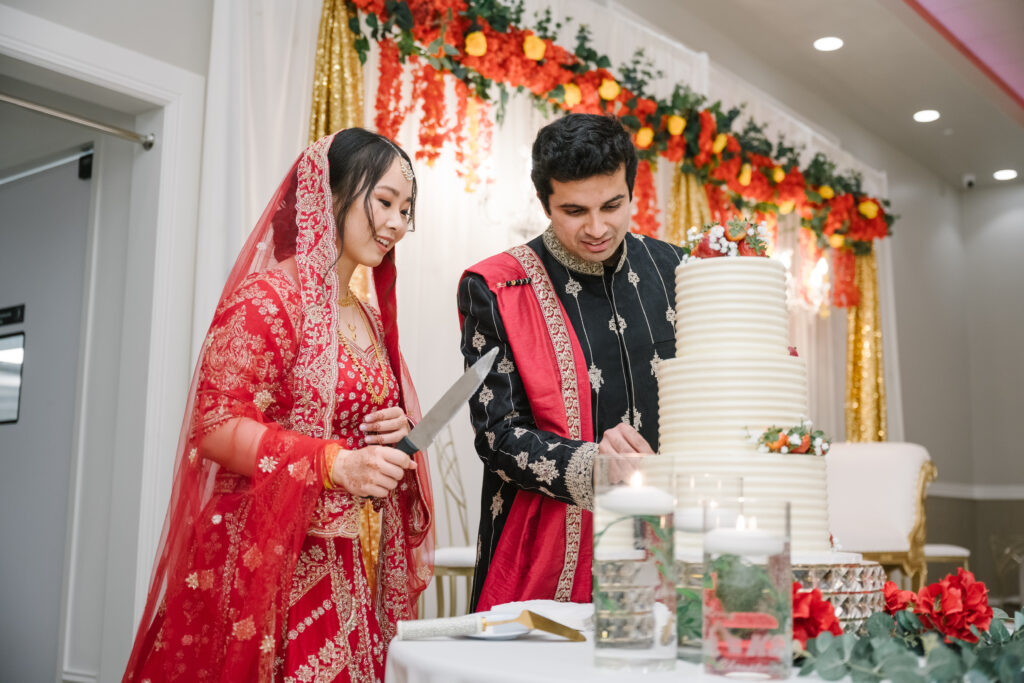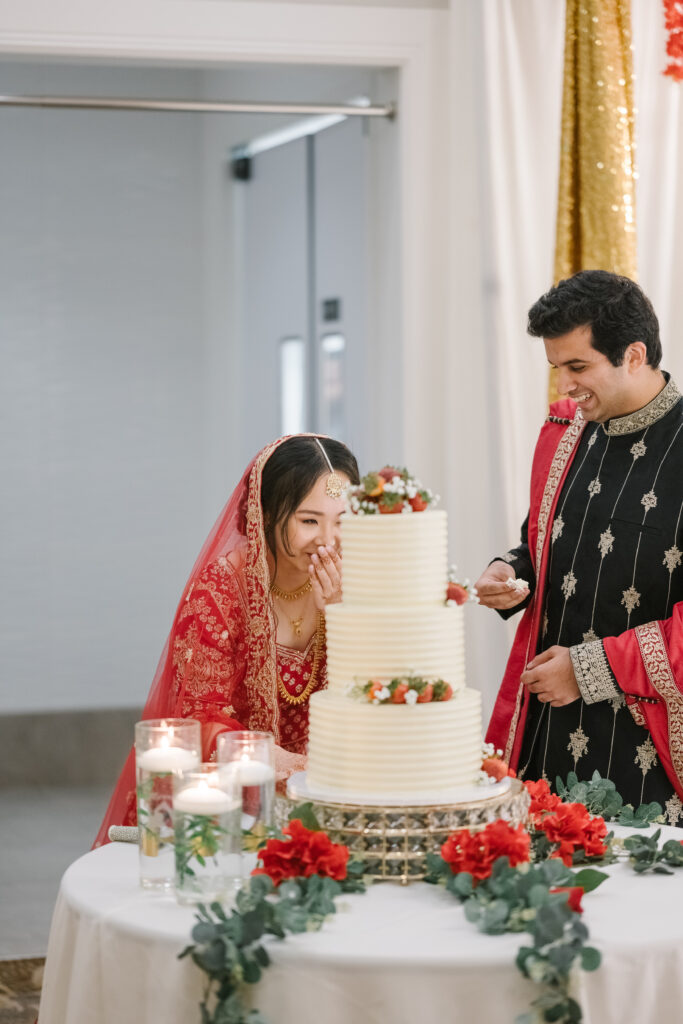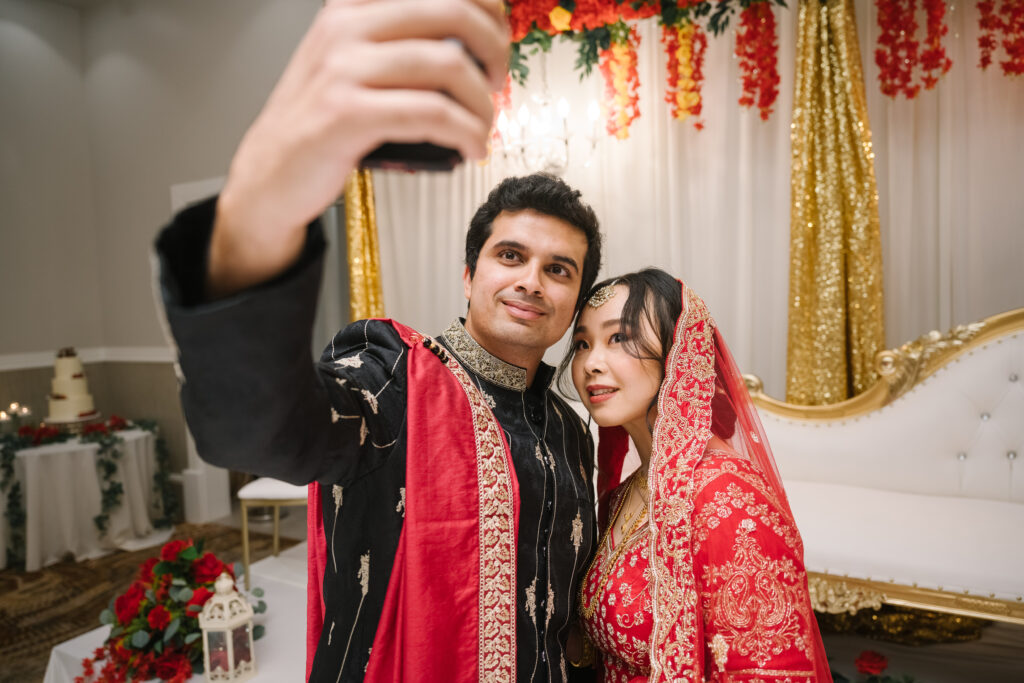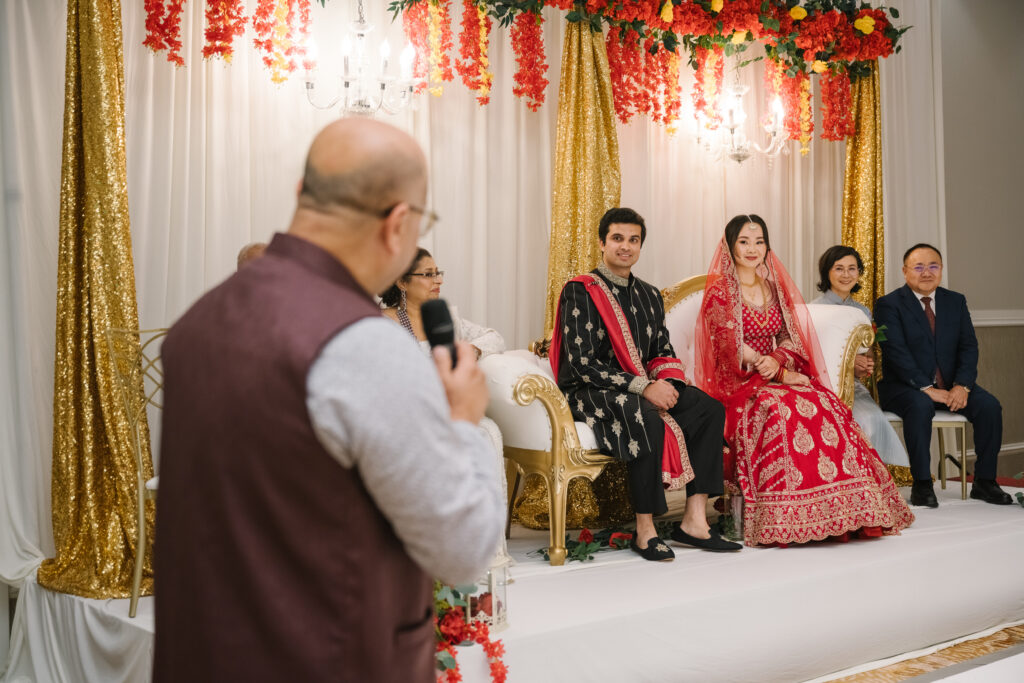
A nikah is the central marriage rite in Islamic culture — a contract that formalizes the union of two individuals in the presence of witnesses, often accompanied by recitations from the Quran, blessings, and an exchange of vows rooted in faith. While customs around it vary, its spiritual core remains consistent: mutual consent, simplicity, and community.
L & T’s ceremony beautifully reflected this tradition, while also embracing a cross-cultural narrative. T, the groom, wore a black sherwani with silver embroidery and a red stole — formal South Asian Muslim attire. L, the bride, though not of Islamic or South Asian background, was adorned in a red lehenga with intricate gold threadwork and a matching dupatta, respectfully stepping into the cultural setting with grace and intention.

Set against a backdrop of vibrant florals and gold drapery, their stage reflected the elegance typical of South Asian celebrations. More than just décor, it was a visual reminder that heritage and harmony can share the same space. The families sat together, not just as witnesses, but as active participants in a moment that bridged culture, faith, and love.

